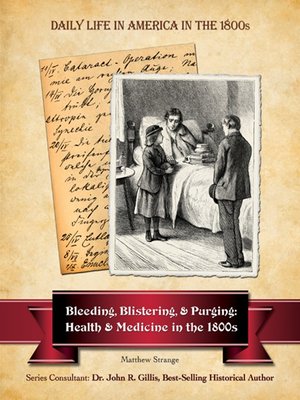Bleeding, Blistering, and Purging
ebook ∣ Health and Medicine in the 1800s · Daily Life in America in the 1800s
By Matthew Strange

Sign up to save your library
With an OverDrive account, you can save your favorite libraries for at-a-glance information about availability. Find out more about OverDrive accounts.
Find this title in Libby, the library reading app by OverDrive.



Search for a digital library with this title
Title found at these libraries:
| Loading... |
Medicine developed into a science in the 1800s, but it was a long evolution from folk remedies and superstition to a modern understanding of how the human body works and how disease is spread. Throughout much of the century, the life expectancy of the average American was decades shorter than it is now. A lack of understanding of simple hygiene contributed to the early death of many women after childbirth, and children routinely died of common childhood diseases like measles. An incorrectly treated broken arm could kill a healthy young man, and pain, disfigurement, and epidemic disease was the fate of many Americans. Traditional herbal remedies were sometimes the best treatments available, while patent medicines often contained toxic substances, and medical procedures were often painful, disgusting, and ultimately useless. The dedicated scientists and medical researchers of the 1800s made a tremendous contribution to the health and happiness of Americans.






